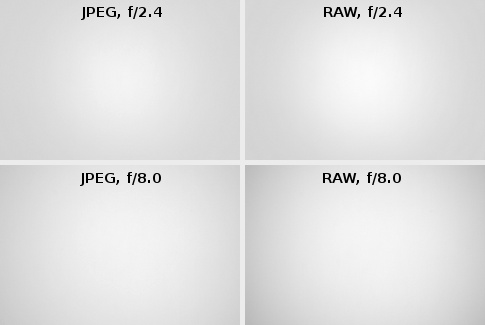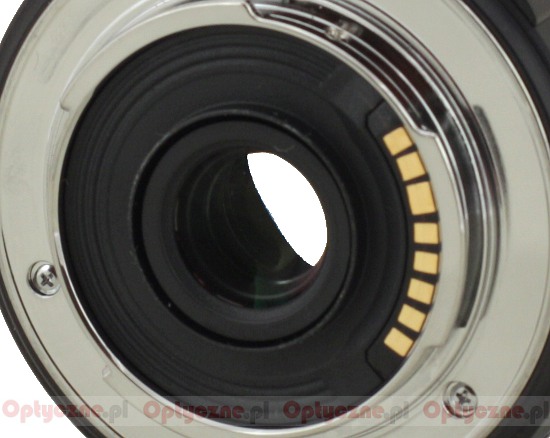Samsung NX 16 mm f/2.4
8. Vignetting

The performance, observed here, is very non-physical. By f/2.4, f/2.8, f/4.0 and f/5.6 both in RAW and JPEG, the vignetting is 0-3-0.5 EV without any decrease. What’s more, by f/8.0 its level rises to the value of –0.76 EV (23%).
Please Support UsIf you enjoy our reviews and articles, and you want us to continue our work please, support our website by donating through PayPal. The funds are going to be used for paying our editorial team, renting servers, and equipping our testing studio; only that way we will be able to continue providing you interesting content for free. |
- - - - - - - - - - - - - - - - - - - - - - - - - - - - - - - - - - - - - - - - - - - - - - - -
It is not difficult to guess why – blocking the lens aberrations’ correcting option while switched on (both in the NX10 body and in the newer NX200) removed the vignetting from RAW files and JPEGs alike. The correction switches off only by f/8.0 where we get the real, physical result.
It is not difficult to conclude what vignetting level we deal with here – it must be similar to that we saw in the case of the Sony 2.8/16 so near 2 EV or a bit below that value. A photo posted below shows a lens at an angle so one corner of the APS-C sensor catches rays coming from the optics. It is obvious than in such a configuration the active, light gathering surface constitutes about a half of the surface which can be visible from the frame centre.
 |






